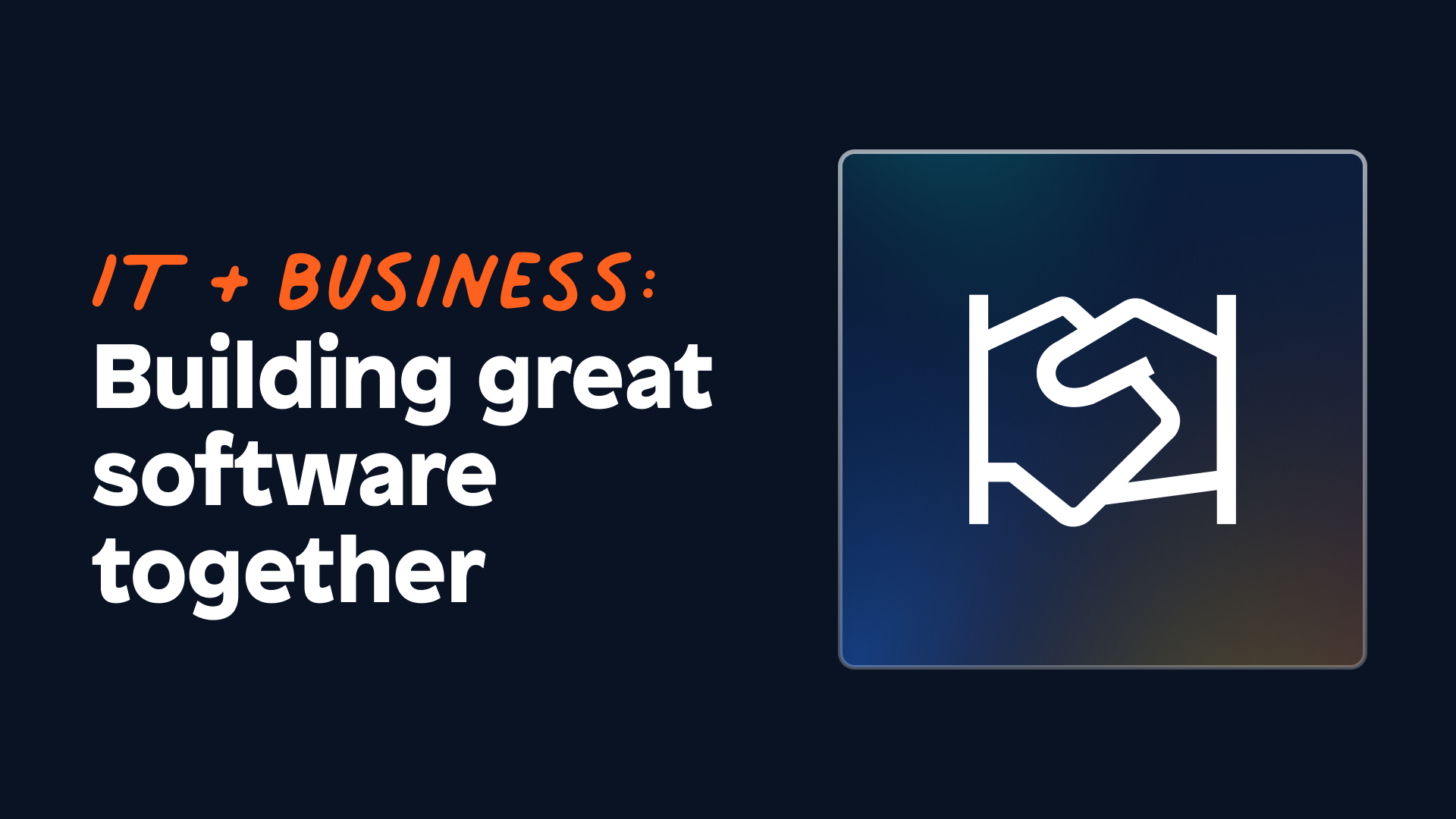Fusion Teams, Explained: Benefits, Roles & Examples

Teamwork makes the dream work. But if IT can’t deliver what is asked of them throughout the development process, the dream can quickly become a nightmare.
CIOs are under pressure to develop and deliver apps yesterday. But while technology is crucial for developing apps, assembling the right team to build the apps is paramount.
Fusion teams are assembled with these priorities in mind and are the best way to ensure that stakeholders’ needs are met. Read on for a deep dive into fusion teams.
What are fusion teams?
Fusion teams are collaborative cross-functional teams made up of people with various digital talents, disciplines, and skill sets.
Gartner first coined the term “fusion teams” to describe multidisciplinary teams that blend technology, analytics, and domain expertise. Rather than working in departmental silos in traditional organizational roles, fusion teams combine experts across domains and are organized by business and customer outcomes.
For example, it’s common for fusion teams to focus on specific digital transformation initiatives, like modernizing a legacy system or digitalizing manual processes. (See more examples below.)
Fusion teams vs. Agile teams
Does the definition of a fusion team sound familiar? If you’ve heard of the Agile methodology, you’ll notice some similarities with fusion teams. In fact, fusion teams often start off as Scrum teams.
Both Agile and fusion teams follow a Lean methodology. The #1 focus is to create and deliver fast, value-driven apps without time-sucking administrative barriers. But unlike other cross-functional teams, fusion team members have the expertise and ability to deploy solutions directly to end users.

Examples of fusion teams
So what does a fusion team look like in practice?
It depends on the task at hand. Fusion teams are driven by a specific business outcome, which will differ for every enterprise.
Here’s what Gartner provides as examples of fusion teams:
- Digital product teams focus on innovating the product portfolio through fast and agile digital product development.
- Digital channel teams use precision marketing and customized experiences to reach new customers.
- Digital operations teams redesign supply chains with automation to cut operational waste and increase process visibility.
- Data and analytics teams share information across the enterprise to implement AI-driven decision making.
Members of a fusion team
Every enterprise’s fusion team will look different, but the most important thing is that it includes people with varied expertise in the focus areas that your business goals require.
For example, a fusion team working on automating a supply chain might include an operations specialist, vendors, and internal and external end users.
Fusion teams often include specialists from:
- Business
- Marketing
- Sales
- IT
- R&D
- Development
- Subject matter experts (SMEs)
- End users
The members of a fusion team are autonomous, but they all share responsibility for the fruits of their labor.
Every fusion team also needs a leader. A fusion team leader is similar to an Agile product owner, and they are responsible for:
- Resourcing
- Planning and roadmapping
- Leading strategies
3 benefits of fusion teams
Fusion teams are gaining popularity due to the countless benefits they offer the enterprise. Here are a few key highlights.
1. Faster app development
Enterprises don’t have time to waste when it comes to delivering in-demand apps.
What some organizations forget is that development is just one of many steps to deliver a product that meets stakeholders’ expectations. Planning, continuous collaboration, testing, and other phases of the development lifecycle are just as important and require significant time investments.
Fusion teams fast-track each phase of development by breaking down silos. A big part of this involved making it easier to share knowledge and feedback.
This eliminates bottlenecks, streamlines the development process, and helps teams progress through digital transformation.
Gartner notes that fusion teams can progress app development 2.5x faster than centralized efforts. From ideation to delivery, collaboration happens early and often, so teams can deliver on stakeholder expectations the first time.
2. Autonomous teamwork
Fusion teams offer the best of both worlds in terms of individual autonomy and teamwork.
Individually, team members are representatives of their domain, and their subject matter expertise is heard and represented during the planning and progression of application development.
For example, a salesperson may be a team’s authority on the sales cycle and customer perspectives. Ultimately, individuals have full autonomy when it comes to innovation and decision making related to their specialty.
As for the entire team, everyone is committed to the successful delivery of a product, rather than their individual business function. The team also shares full responsibility for the outcome—whether good or bad.
3. Better apps
One of the greatest benefits of a fusion team is the ability to gain perspectives from different departments. This helps fusion teams merge their expertise to drive all planning and execution throughout the app-building process.
Sales reps see things differently than marketing folks, business reps have specific requirements to follow, and developers are the authorities on the extent of an app’s capabilities. SMEs outside of IT are able to influence and direct app development so that stakeholders get exactly what they need, with minimal rework.
The only way to achieve results that satisfy all stakeholders is to combine these different perspectives and expectations.
When these experts come together, fusion teams gain a more holistic understanding of business and user needs. And without traditional departmental silos, information is readily available, communication flows more freely, and teams produce a more valuable product.
2 business challenges of fusion teams
Generally, the benefits of fusion teams outweigh the disadvantages. But keep these in mind when building your fusion team.
1. Controlling shadow IT
Shadow IT is the introduction of new tools and technology without the knowledge or approval from the IT department. And it’s becoming a big concern since IT is no longer the only source for developing apps.
Low-code platforms and similar tools have democratized enterprise app development for those without a technical background.
And fusion teams are more than capable of finding and implementing new technology to achieve their goals—without IT knowing.
In fact, data from Gartner shows that 70% of fusion team leaders believe their organization’s standards around the use of data and technology only apply to IT.
CIOs are rightfully concerned because this mindset will increase the risks of shadow IT and decentralized processes. Those factors could lead to security breaches that make the entire organization vulnerable.
To avoid shadow IT, include the fusion team leader in the creation of compliance and governance policies. There are also tools in low-code platforms to create automatic guardrails for your team.
2. Preventing siloed fusion teams
A fusion team is intended to break down departmental silos. But sometimes, teams can end up siloing themselves from the rest of the organization.
CIOs worry that fusion team leaders will prioritize their own team’s needs and outcomes over the needs and concerns of the entire enterprise.
Silos are detrimental to organization-wide communication and transparency. The lessons learned can be incredibly valuable across the organization, as long as fusion teams actively share their newfound insights.
How to create an enterprise fusion team
If you’re interested in fusion teams, you’re in great company. Data from Gartner shows that at least 84% of companies and 59% of government entities are using fusion teams.
Your fusion team should include people with skill sets that are relevant to your end goal. Keep the team small like an Agile team—less than 9 people—and appoint a team leader with sound digital judgment.
Digital judgment is a mindset that helps leaders balance the needs and goals of their fusion team and the enterprise.
It’s also the strongest predictor of team success. An example of good digital judgment for a fusion team leader is the ability to develop and deliver apps without adding risk to the entire enterprise.
Gartner found that fusion team leaders with good digital judgment are 5x more likely to deliver successful team outcomes than those with poor digital judgment. But only 22% of fusion teams say they have a leader with good digital judgment.
Fusion team tips to remember
When assembling a fusion team, don’t forget to:
- Keep the team small — less than 9 people
- Recruit people with expertise relevant to the goal
- Appoint a team leader with sound digital judgment
- Involve fusion team leaders to help create governance and compliance practices
- Share insights and lessons learned across the organization
A fusion team also needs the right technology to build and deploy app solutions. Low-code development platforms can be used by any fusion team, regardless of members’ technical prowess.
